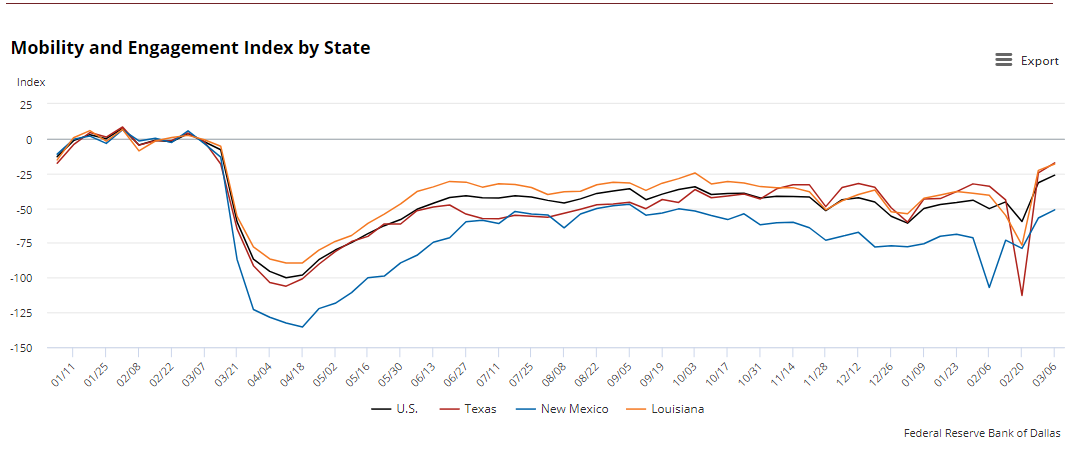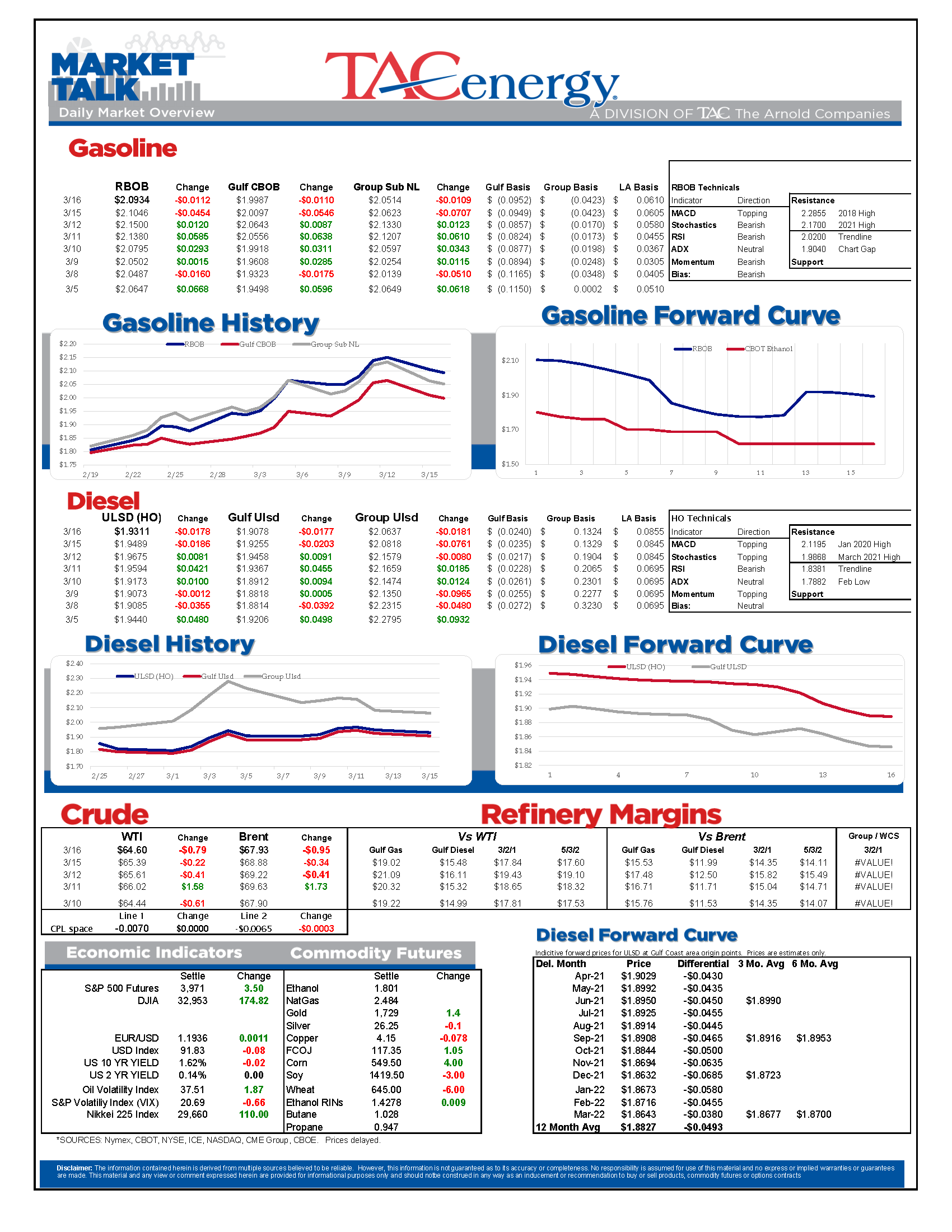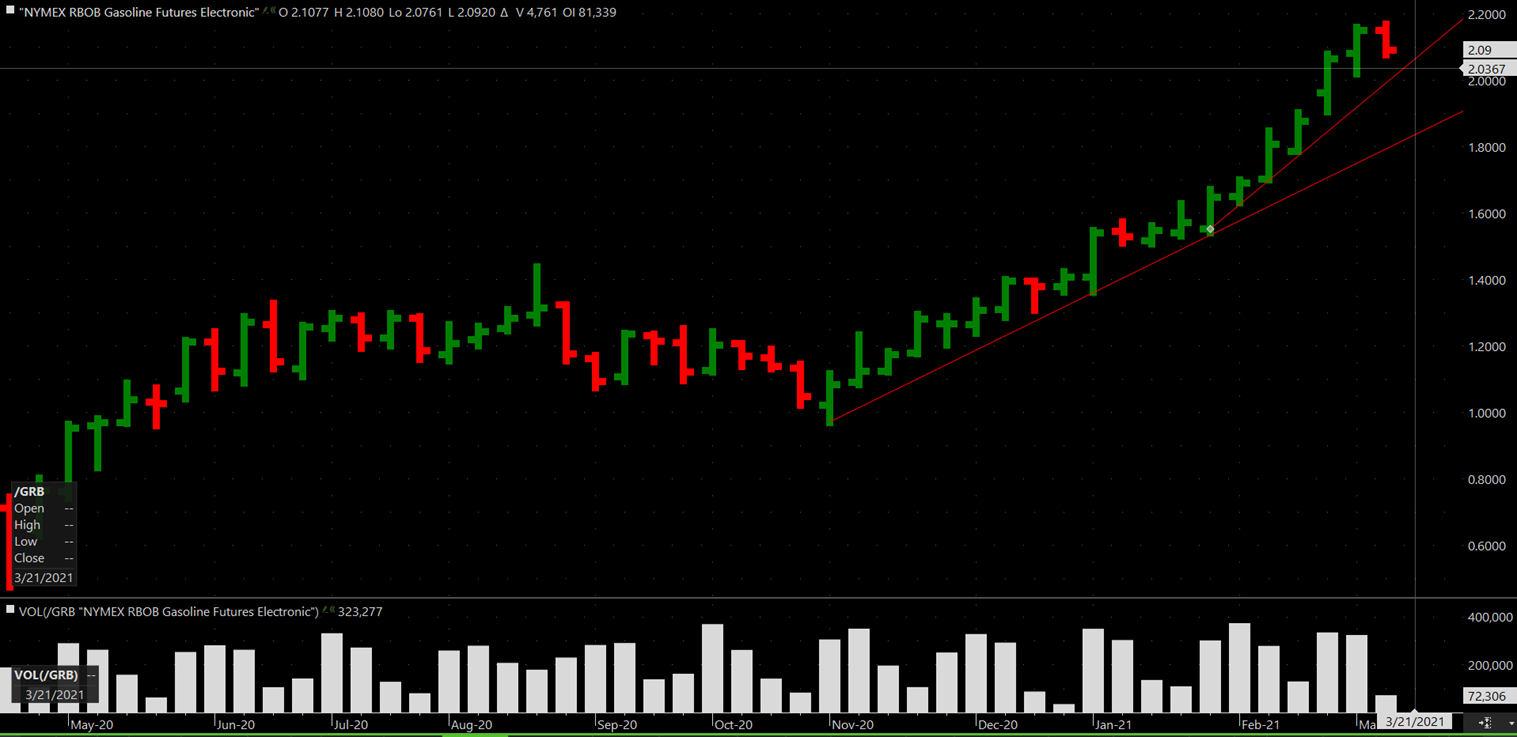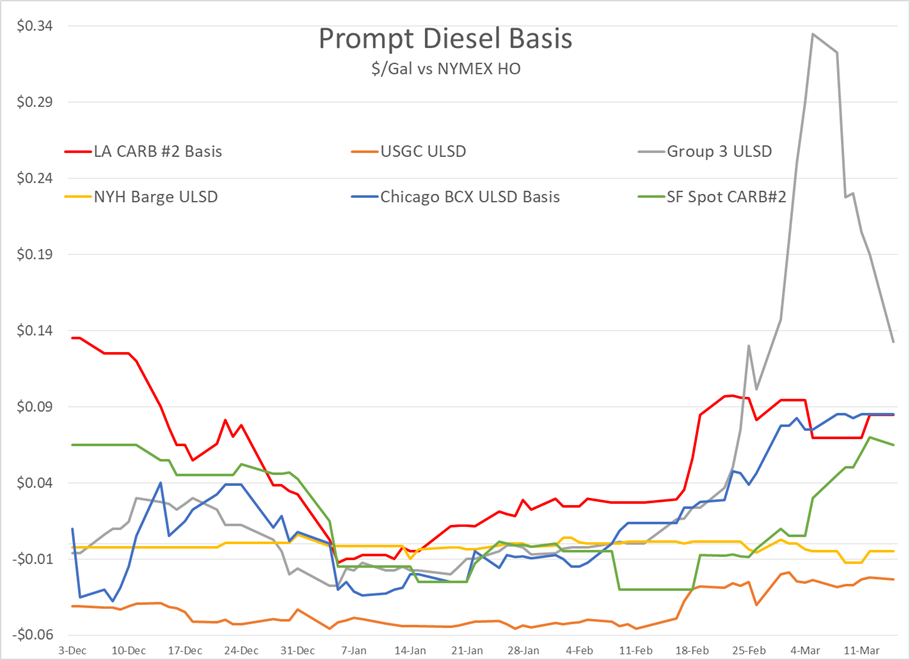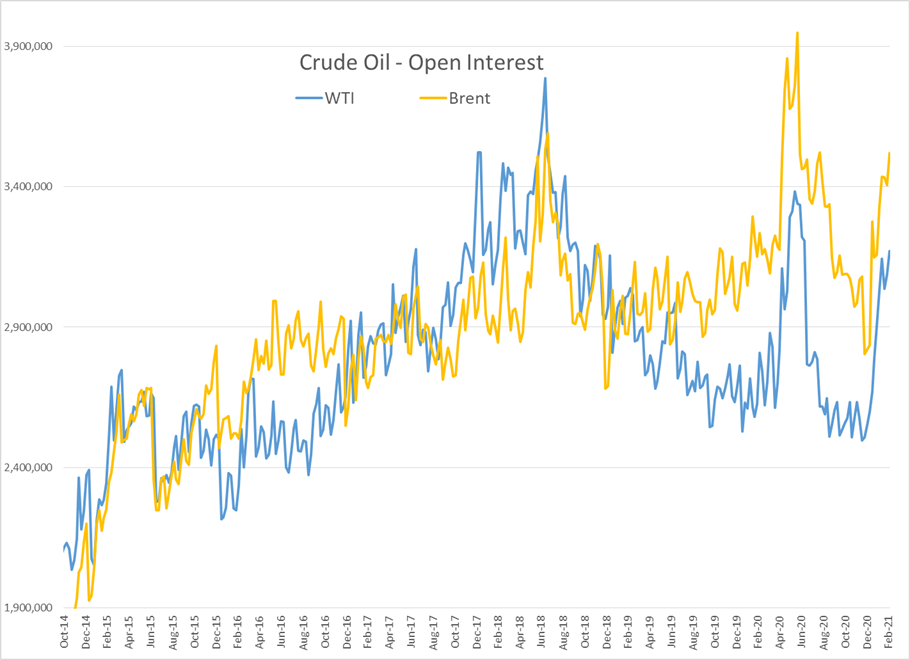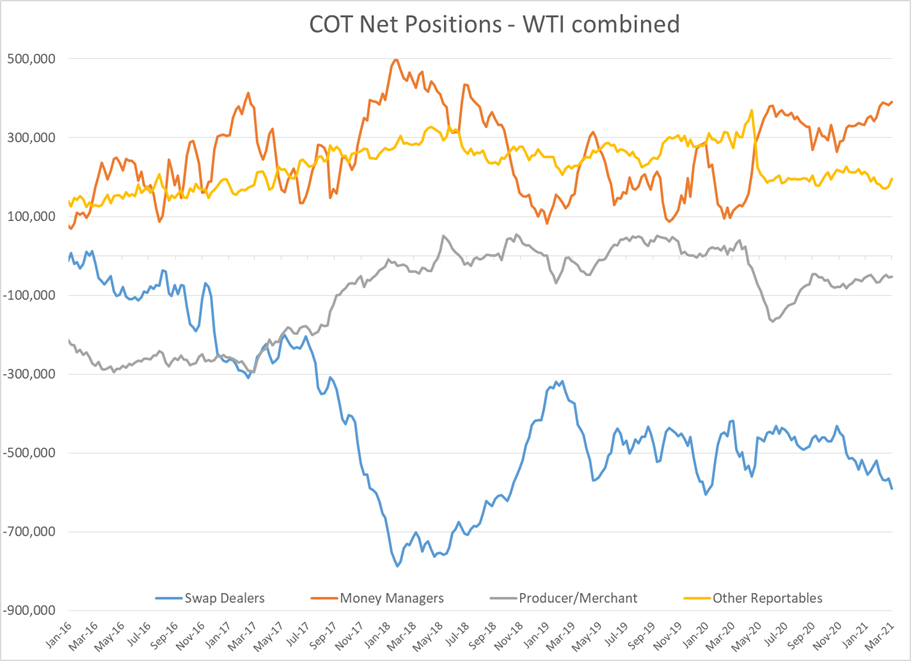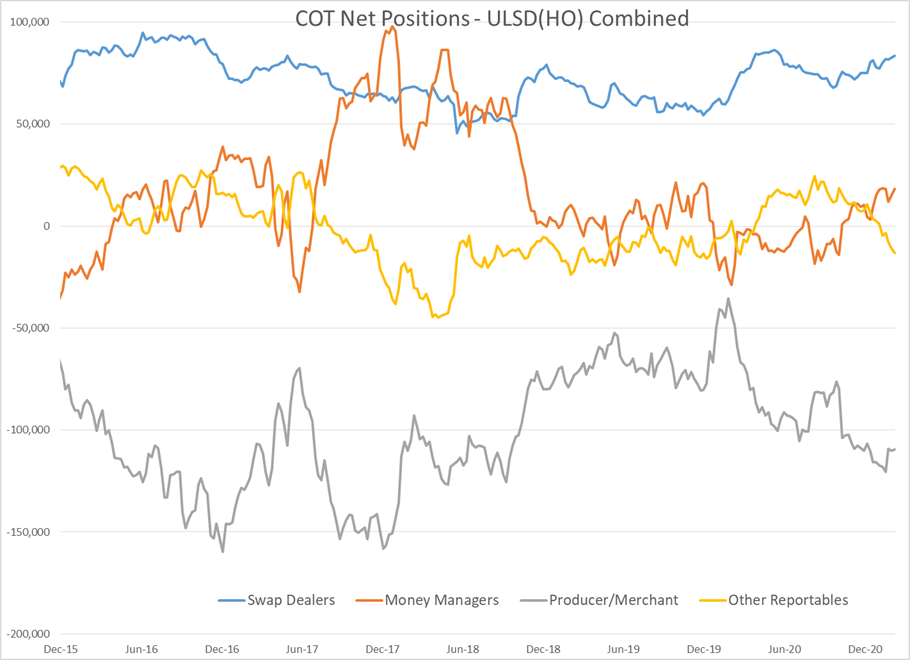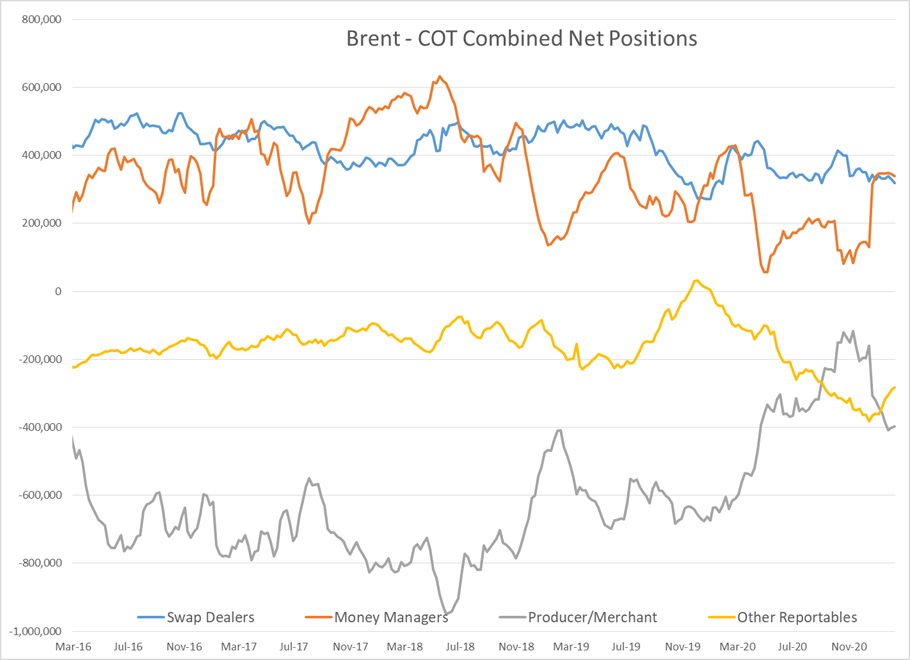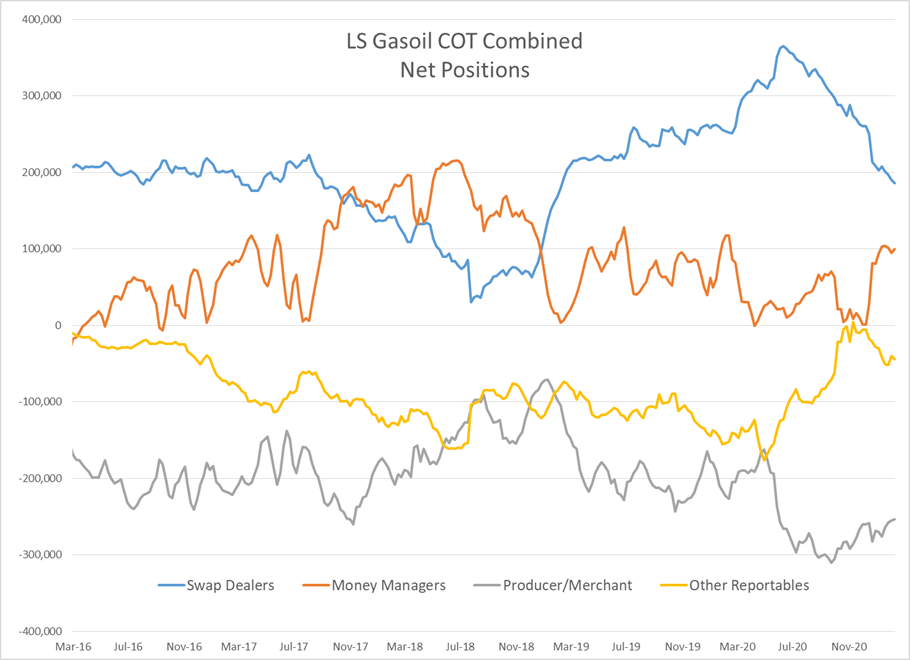Energy Complex Still Faces Selling Pressure

The energy complex is facing selling pressure for a second straight day after it appears the RBOB rally finally ran out of steam Sunday night. The selloff is happening despite the S&P 500 reaching fresh record highs, as the correlation between daily price movements in the equity index and energy futures has dropped to its lowest level in a year this week.
RBOB futures are now eight cents below the three year high set in the overnight session, but the gasoline contract is lagging the others in the sell-off so far this morning. As the chart below shows, even with the big pullback this week, the bullish trend lines are still intact for now so it’s too soon to call an end to the rally.
A pattern is emerging in the refinery restart races, each day brings stories of a few new units brought online, and one or two reports of other units that will need more time to fully recover from the damage done in February’s cold snap. The diesel basis chart below is a microcosm of that impact, with the market not nearly as tight as it was two weeks ago, but still needing to do a lot of work to get back to normal levels.
Money managers that had shorted energy contracts were getting squeezed out last week, which pushed the net length higher for WTI, HO, RBOB and Gasoil contracts. Only Brent saw a reduction in net length (bets on higher prices) on the week. Refined products also saw some new length added, suggesting that large speculators are still will to bet that the rally can continue, even after prices have already doubled in the past 4.5 months. Open interest in crude oil contracts is increasing, reaching its highest levels since the chaos of last April when WTI went negative, in what’s likely a sign of the expectations for economic recovery, and/or for inflation, in the months ahead.
The Dallas FED’s mobility index shows that movement across the U.S. is at its highest levels since the lockdowns began a year ago. Texas shows to be leading that move higher as the state reopens, just a month after movement dropped to levels worse than the depths of the quarantine lockdowns due to the Polar Plunge. With warmer weather ahead and both drilling and refining activity picking up, we should see this strengthening trend continue in the coming weeks.
Click here to download a PDF of today's TACenergy Market Talk.
News & Views
View All
Energy Futures Are Caught Up In Headline Tug-O-War This Morning
Energy futures are caught up in headline tug-o-war this morning with Canadian oil production concerns and a positive US GDP report trying to push prices higher while sinking Chinese demand worries and Gaza ceasefire hopes are applying downward pressure. The latter two seem to be favored more so far this morning with WTI and Brent crude oil futures down ~45 cents per barrel, while gasoline and diesel prices are down about half a cent and two cents, respectively.
No news is good news? Chicago gasoline prices dropped nearly 30 cents yesterday, despite there not being any update on Exxon’s Joliet refinery after further damage was discovered Wednesday. Its tough to say if traders have realized the supply situation isn’t as bad as originally thought or if this historically volatile market is just being itself (aka ‘Chicago being Chicago’).
The rain isn’t letting up along the Texas Gulf Coast today and is forecasted to carry on through the weekend. While much of the greater Houston area is under flood watch, only two refineries are within the (more serious) flood warning area: Marathon’s Galveston Bay and Valero’s Texas City refineries. However, notification that more work is needed at Phillip’s 66 Borger refinery (up in the panhandle) is the only filing we’ve seen come through the TECQ, so far.
Premiums over the tariff on Colonial’s Line 1 (aka linespace value) returned to zero yesterday, and actually traded in the negatives, after its extended run of positive values atypical of this time of year. Line 1’s counterpart, Line 2, which carries distillates from Houston to Greensboro NC, has traded at a discount so far this year, due to the healthy, if not over-, supply of diesel along the eastern seaboard.
Click here to download a PDF of today's TACenergy Market Talk.

WTI And Brent Crude Oil Futures Are Trading ~$1.50 Per Barrel Lower In Pre-Market Trading
The across-the-board drawdown in national energy stockpiles, as reported by the Department of Energy yesterday, stoked bullish sentiment Wednesday and prompt month gasoline, diesel, and crude oil futures published gains on the day. Those gains are being given back this morning.
The surprise rate cut by the People’s Bank of China is being blamed for the selling we are seeing in energy markets this morning. While the interest rate drop in both short- and medium-term loans won’t likely affect energy prices outright, the concern lies in the overall economic health of the world’s second largest economy and crude oil consumer. Prompt month WTI and Brent crude oil futures are trading ~$1.50 per barrel lower in pre-market trading, gasoline and diesel are following suit, shaving off .0400-.0450 per gallon.
Chicagoland RBOB has maintained its 60-cent premium over New York prices through this morning and shows no sign of coming down any time soon. Quite the opposite in fact: the storm damage, which knocked Exxon Mobil’s Joliet refinery offline on 7/15, seems to be more extensive than initially thought, potentially extending the repair time and pushing back the expected return date.
There are three main refineries that feed the Chicago market, the impact from one of them shutting down abruptly can be seen in the charts derived from aforementioned data published by the DOE. Refinery throughput in PADD 2 dropped 183,000 barrels per day, driving gasoline stockpiles in the area down to a new 5-year seasonal low.
While it seems all is quiet on the Atlantic front (for now), America’s Refineryland is forecasted to receive non-stop rain and thunderstorms for the next four days. While it may not be as dramatic as a hurricane, flooding and power outages can shut down refineries, and cities for that matter, all the same, as we learned from Beryl.

